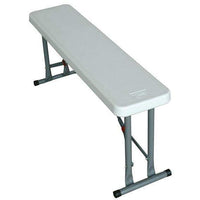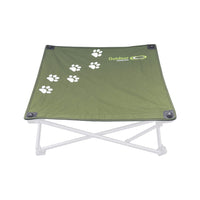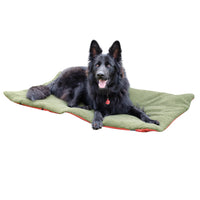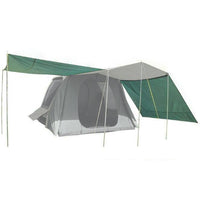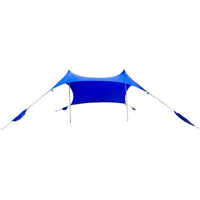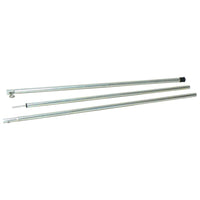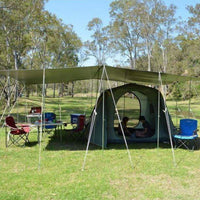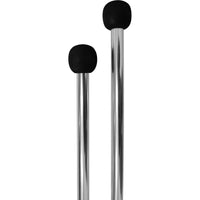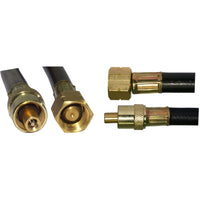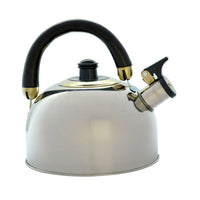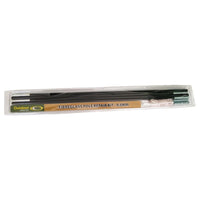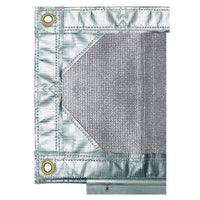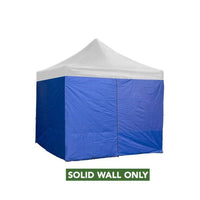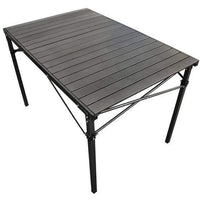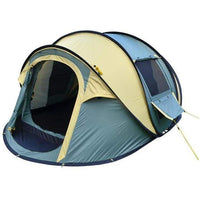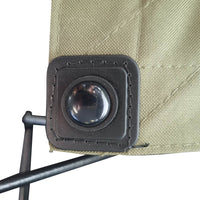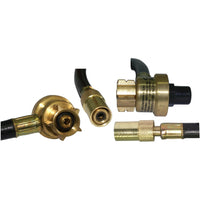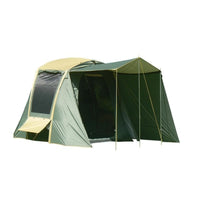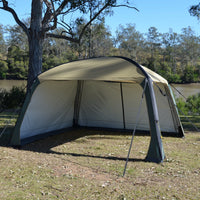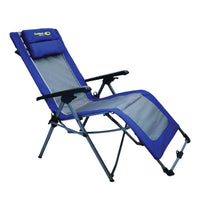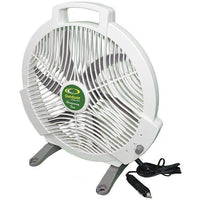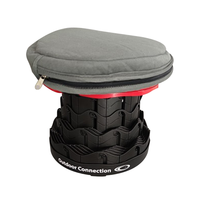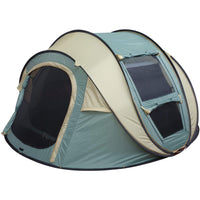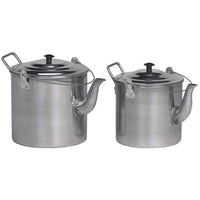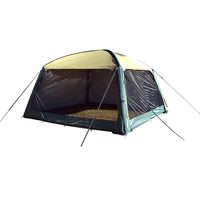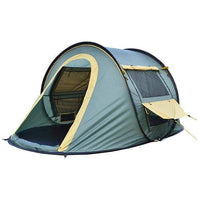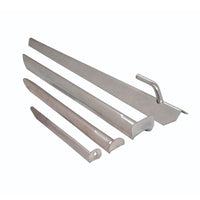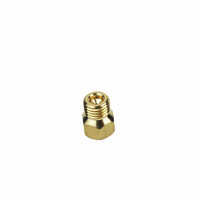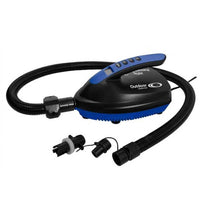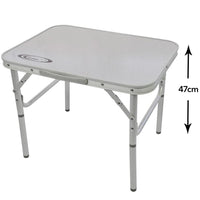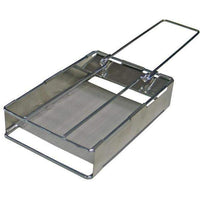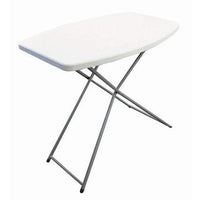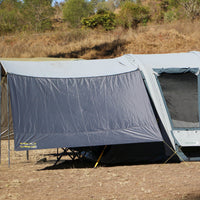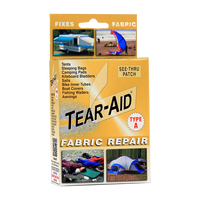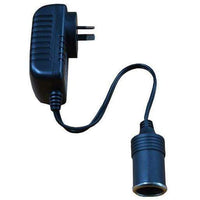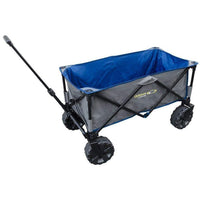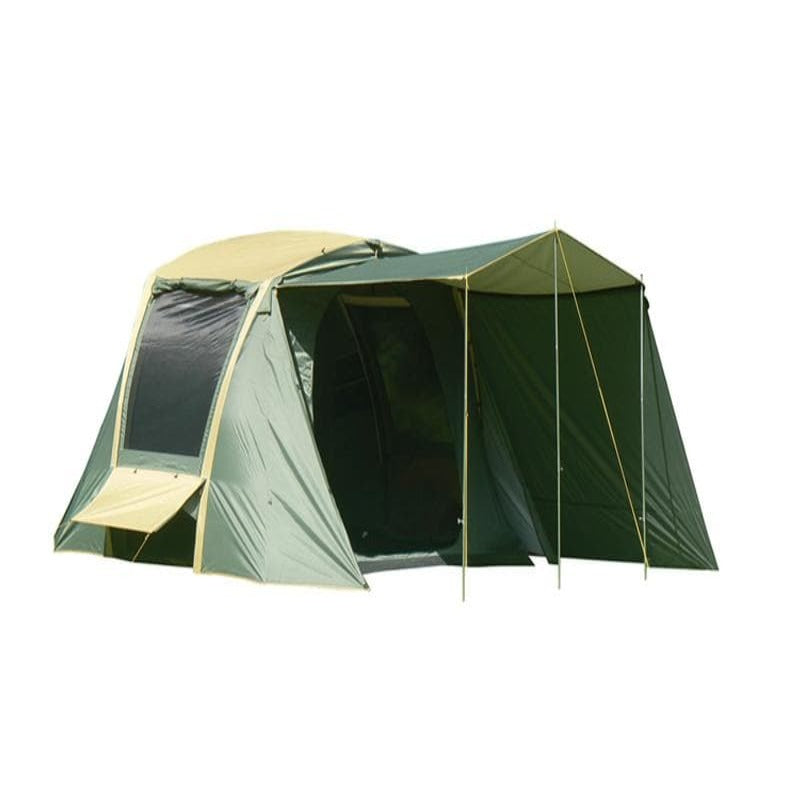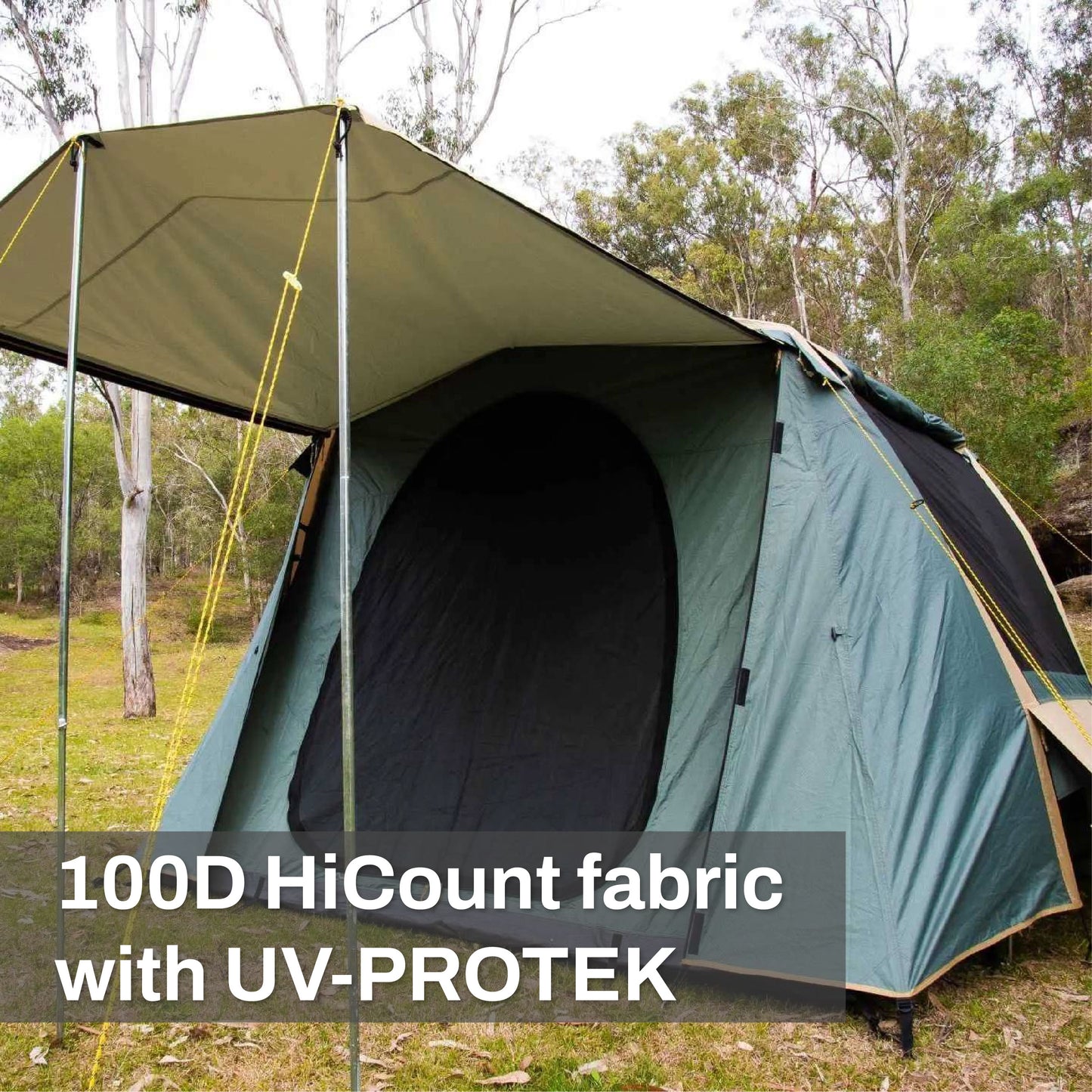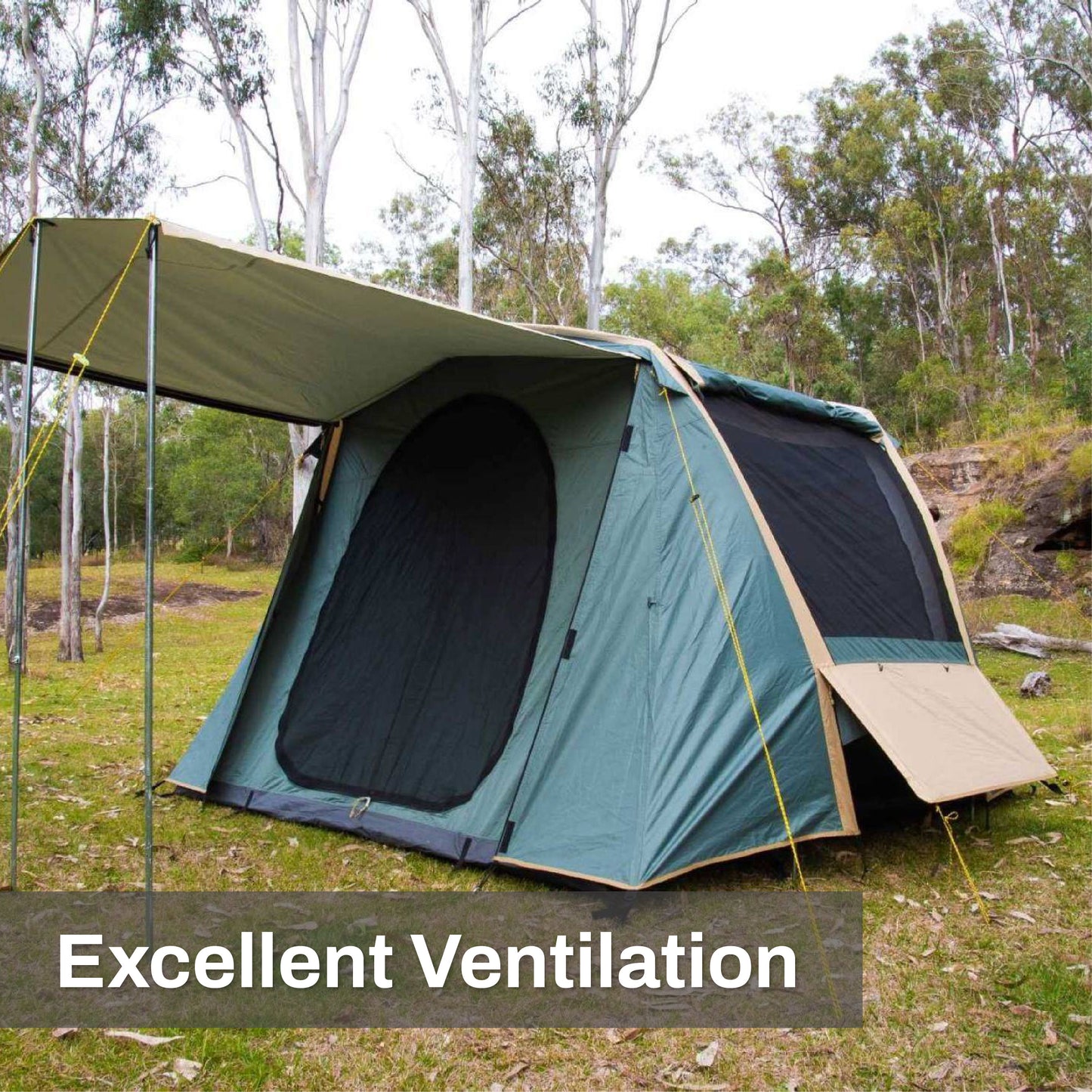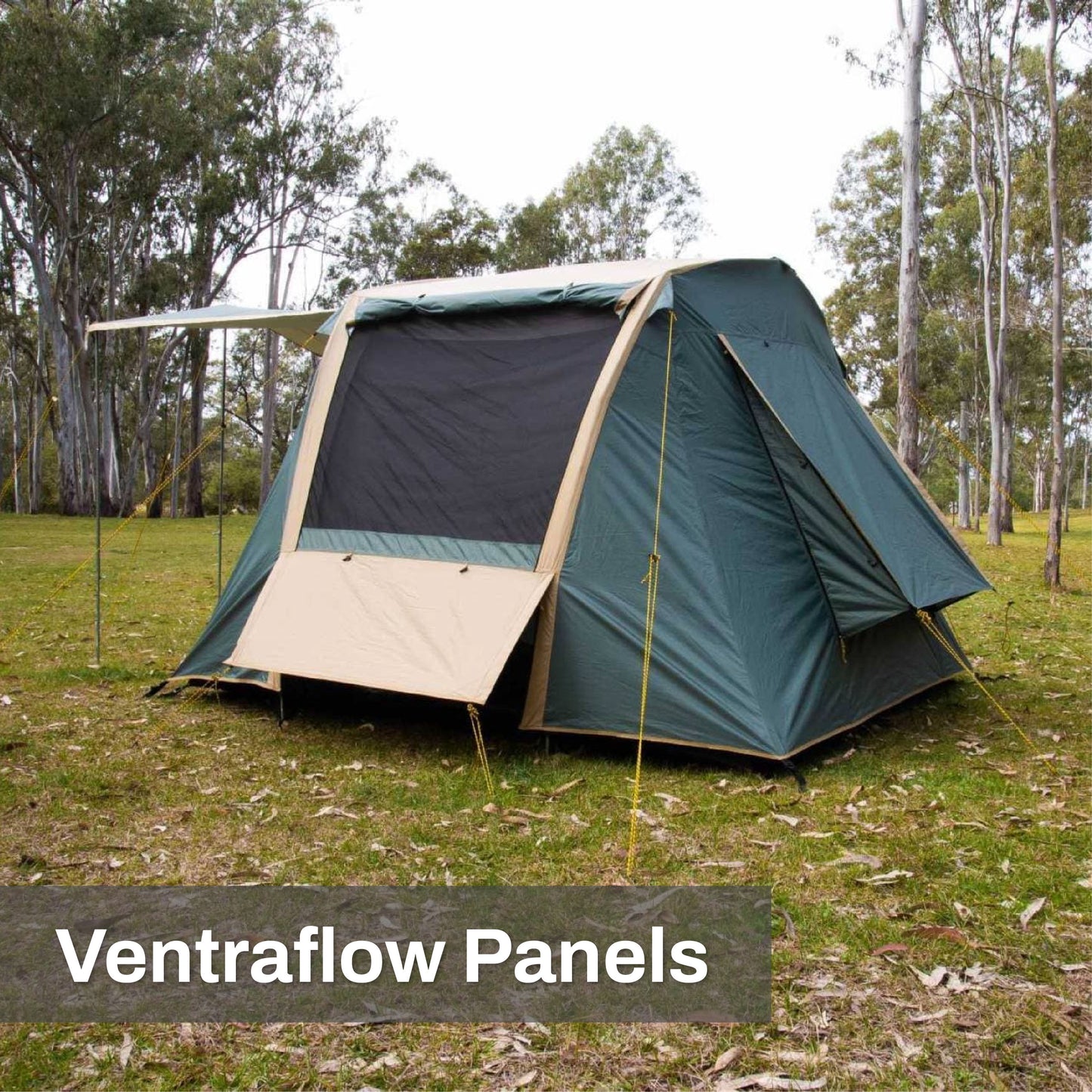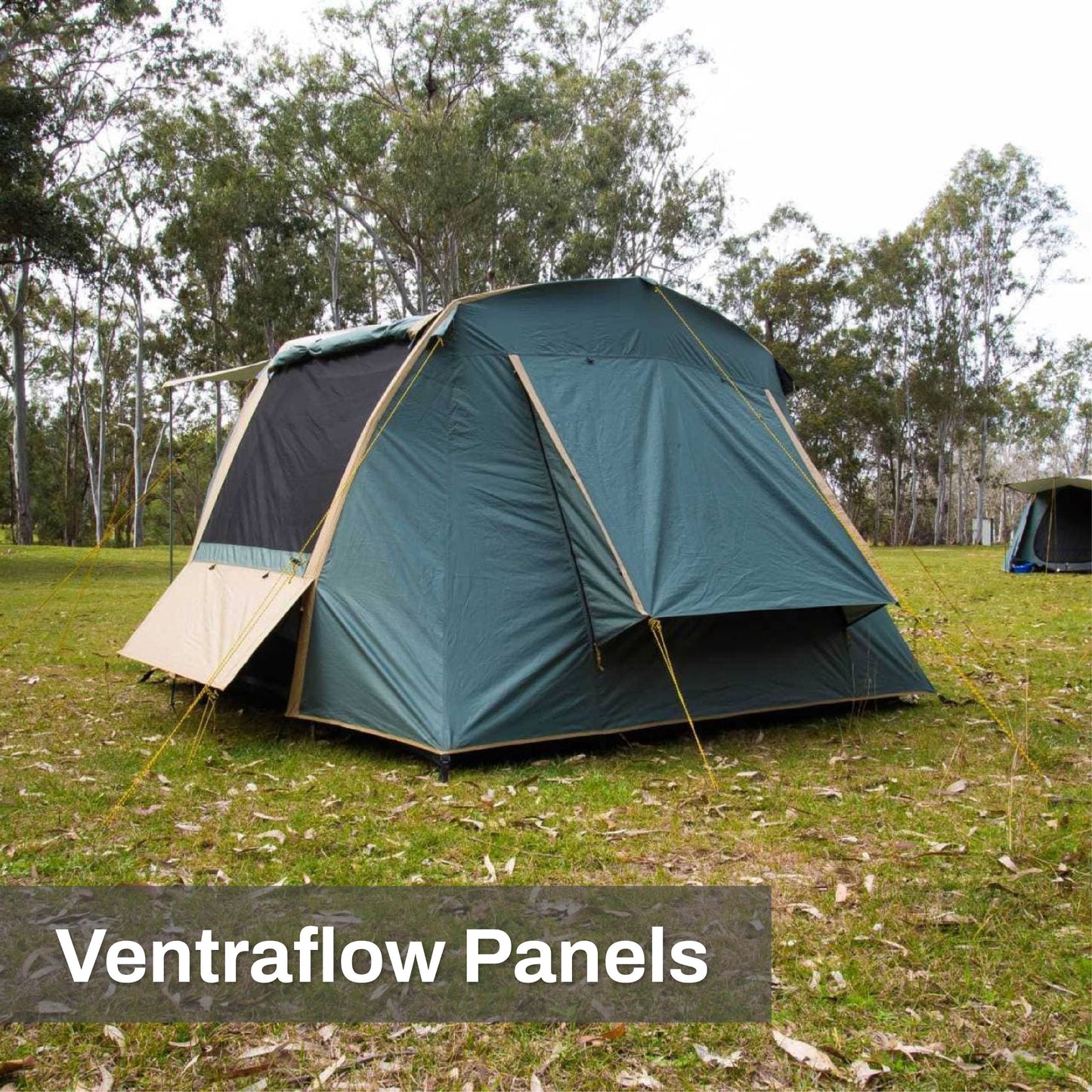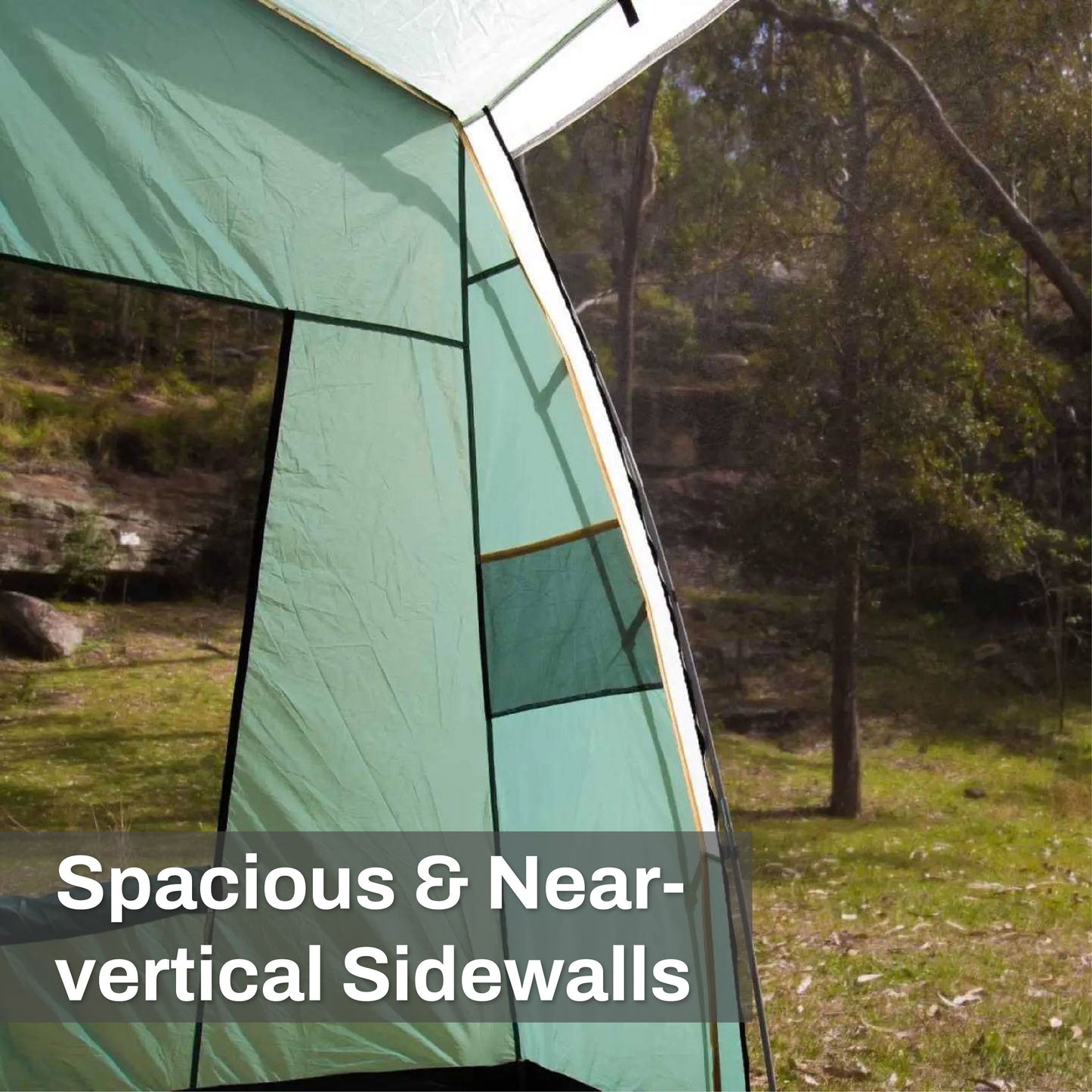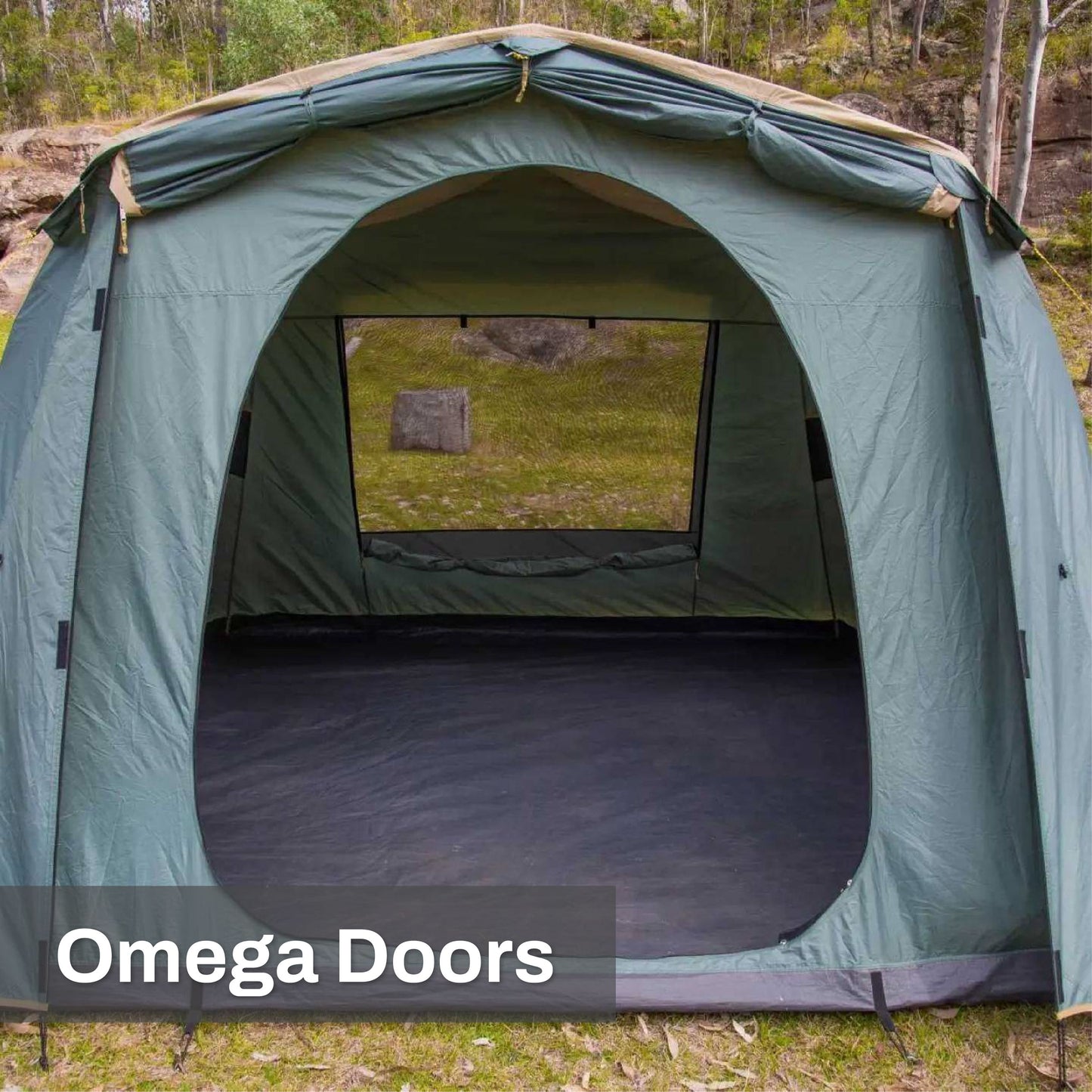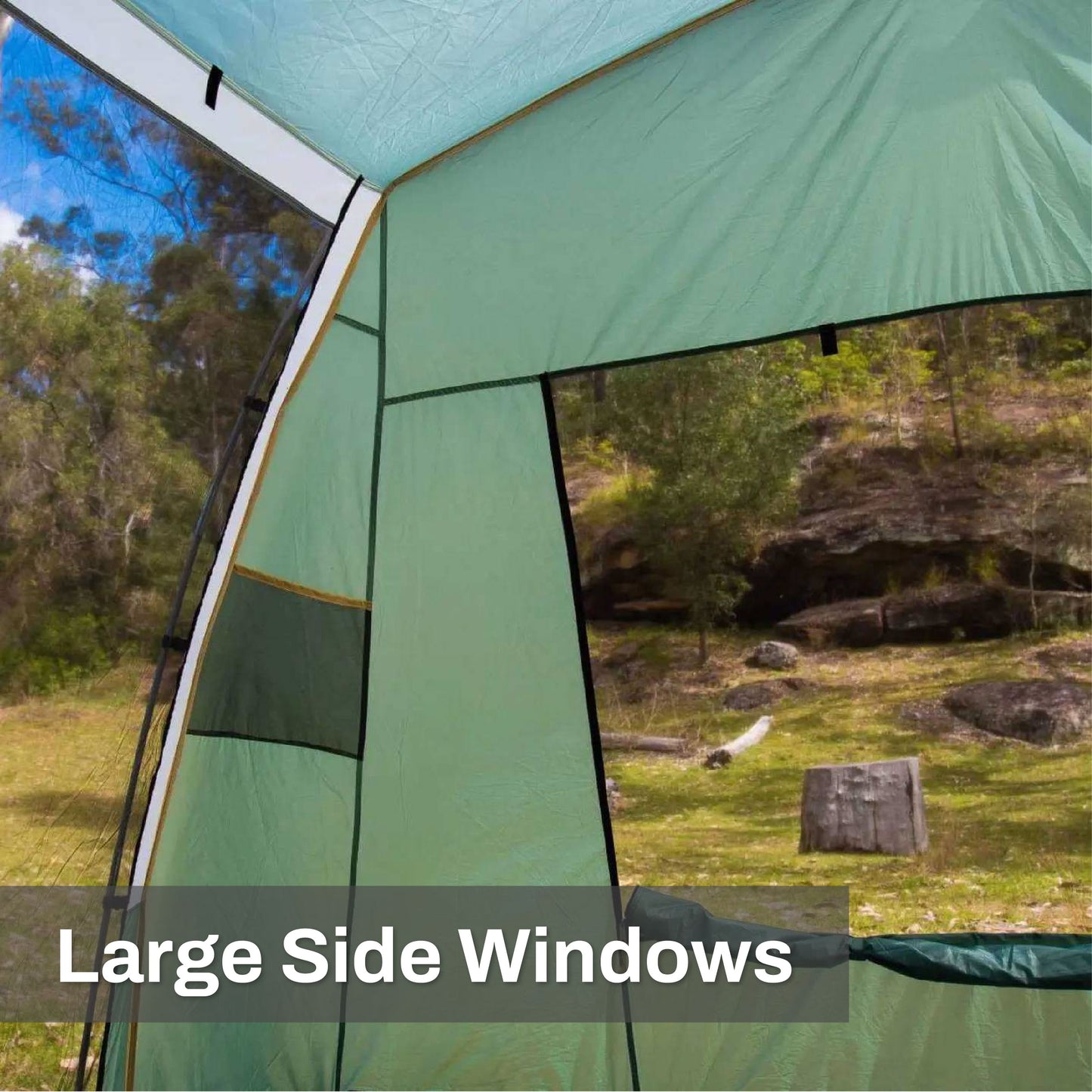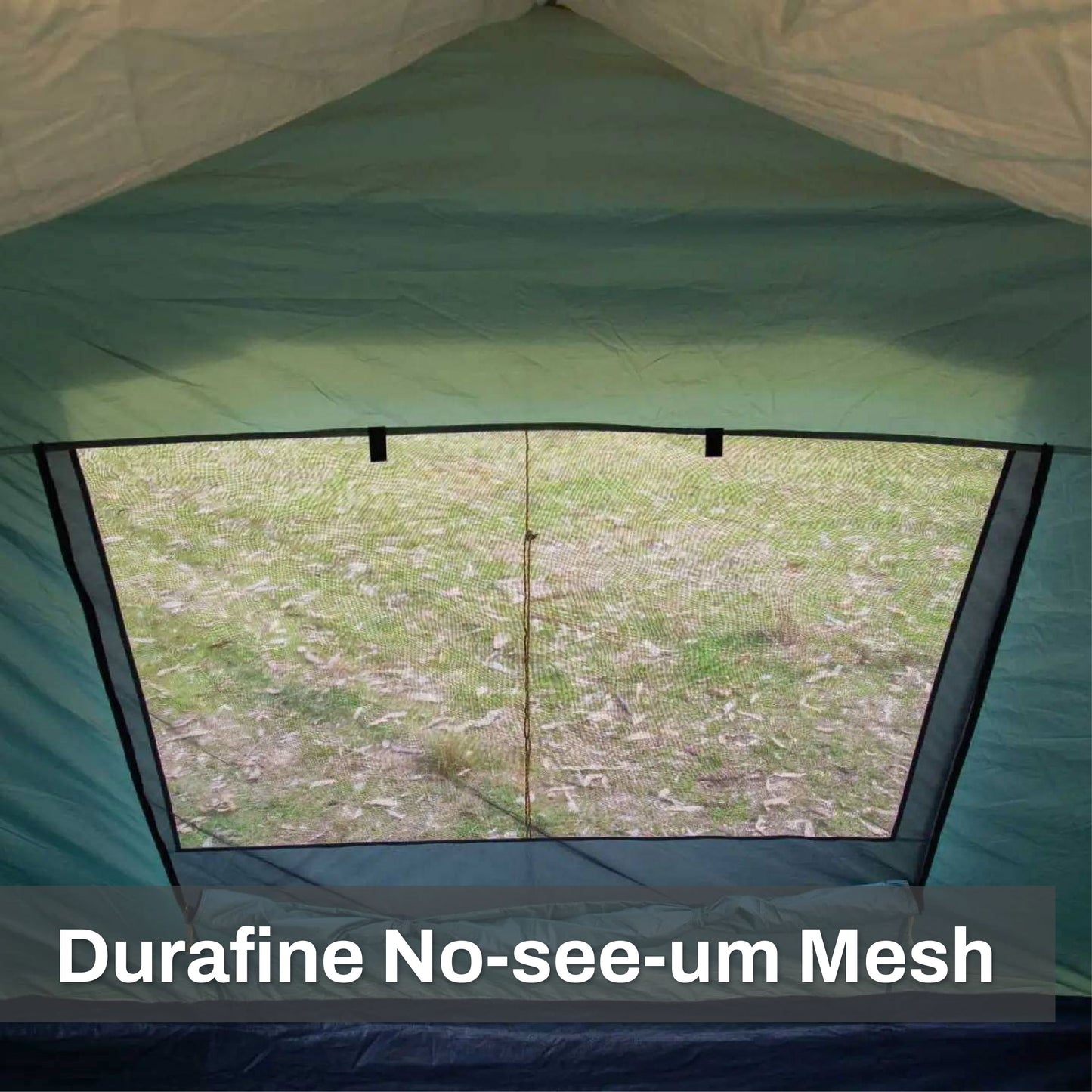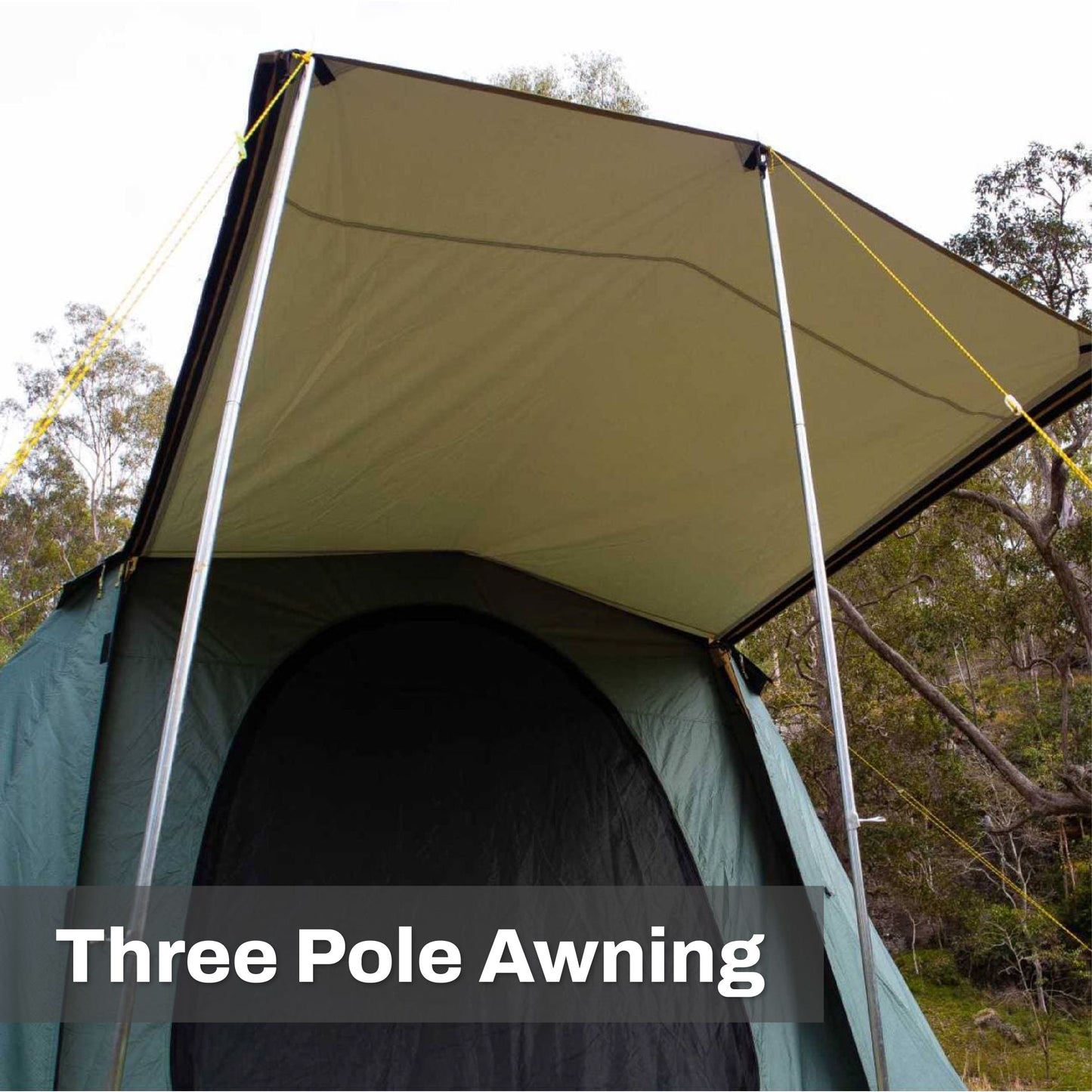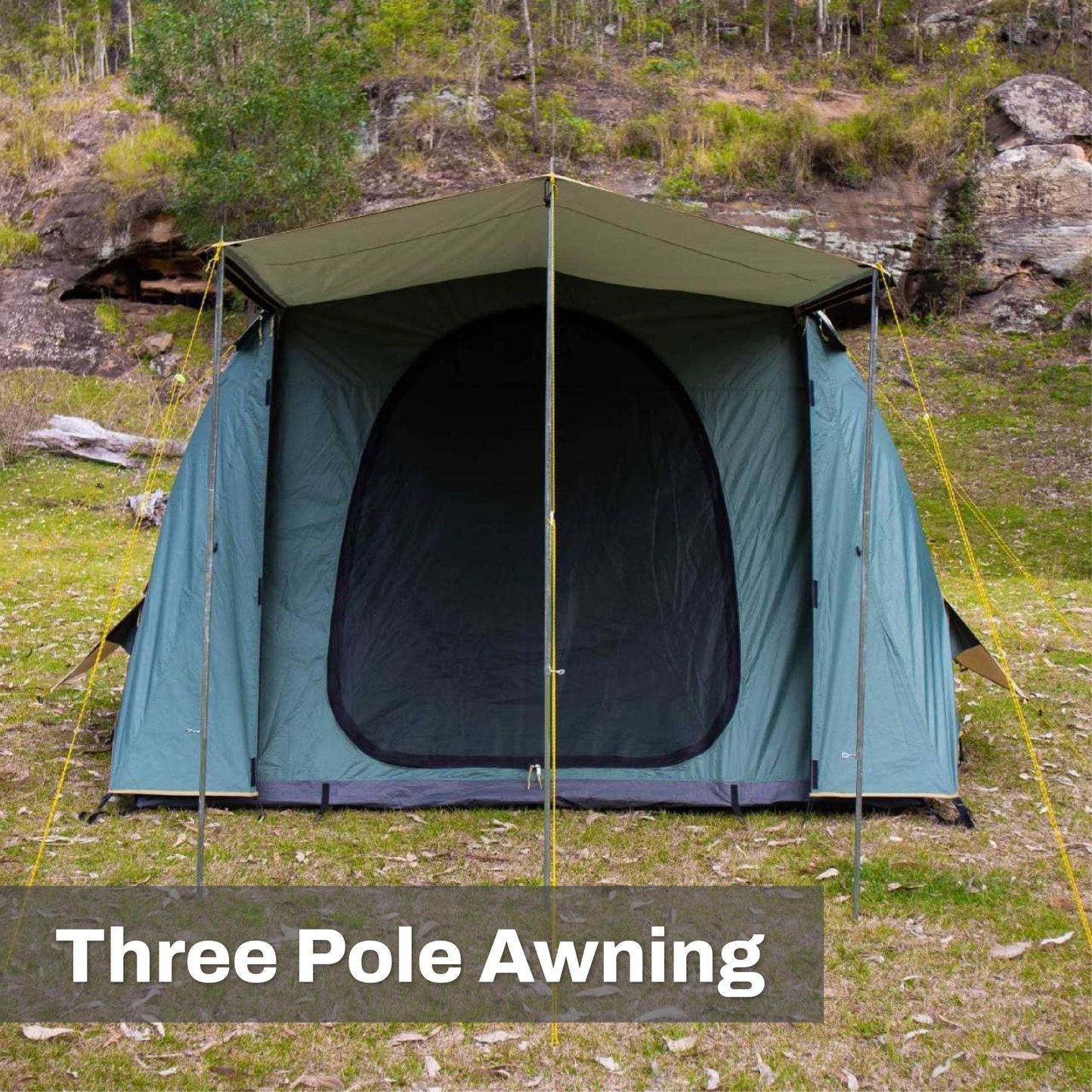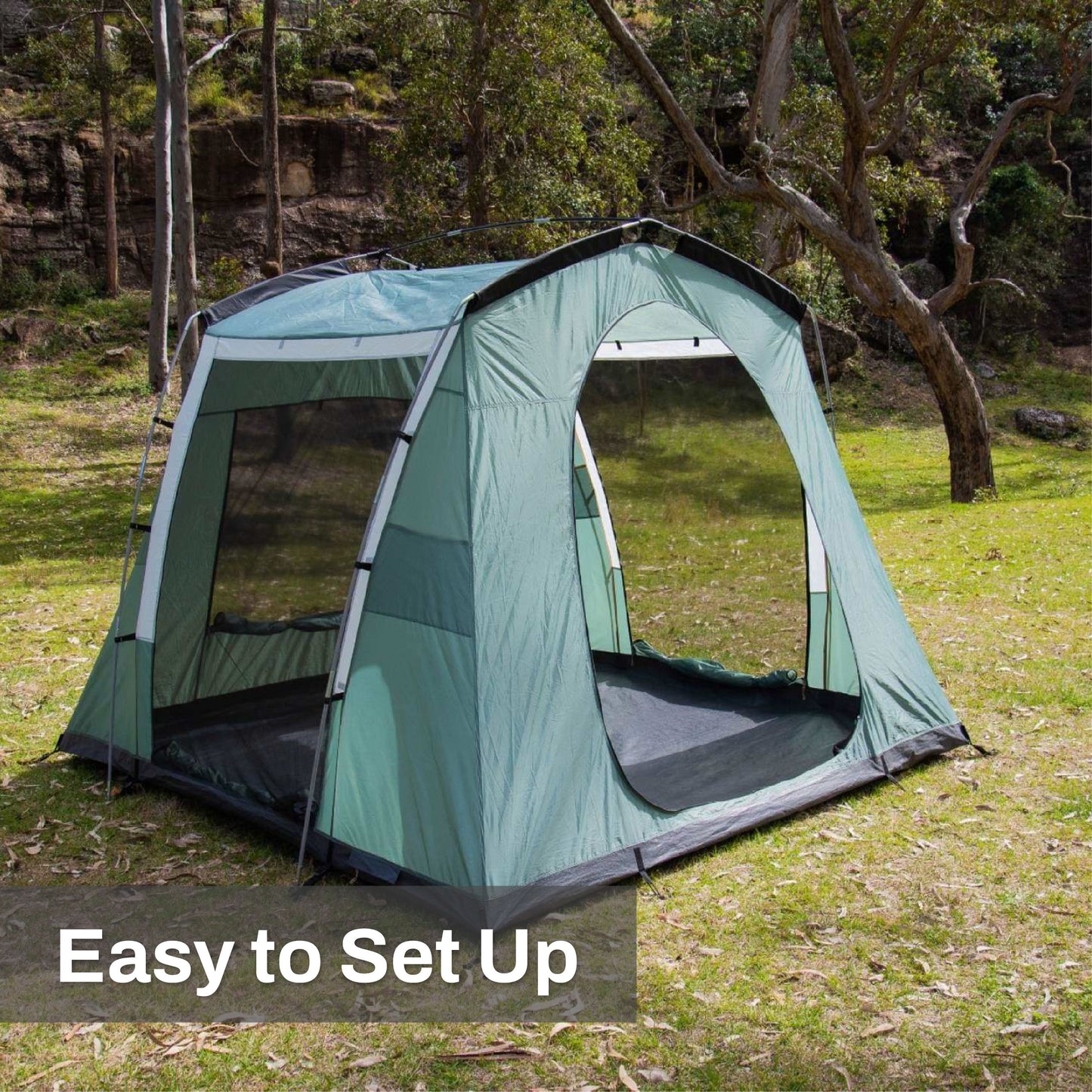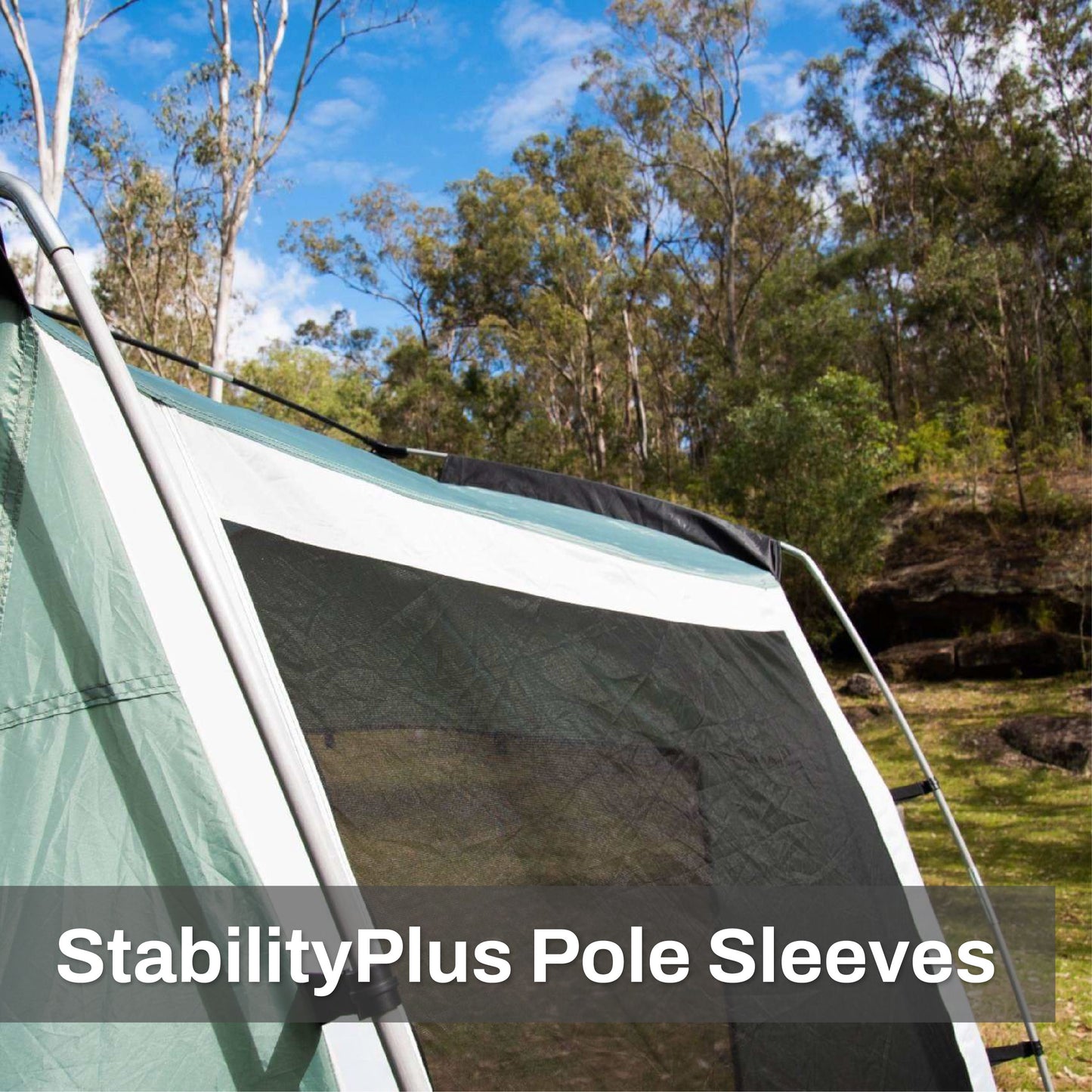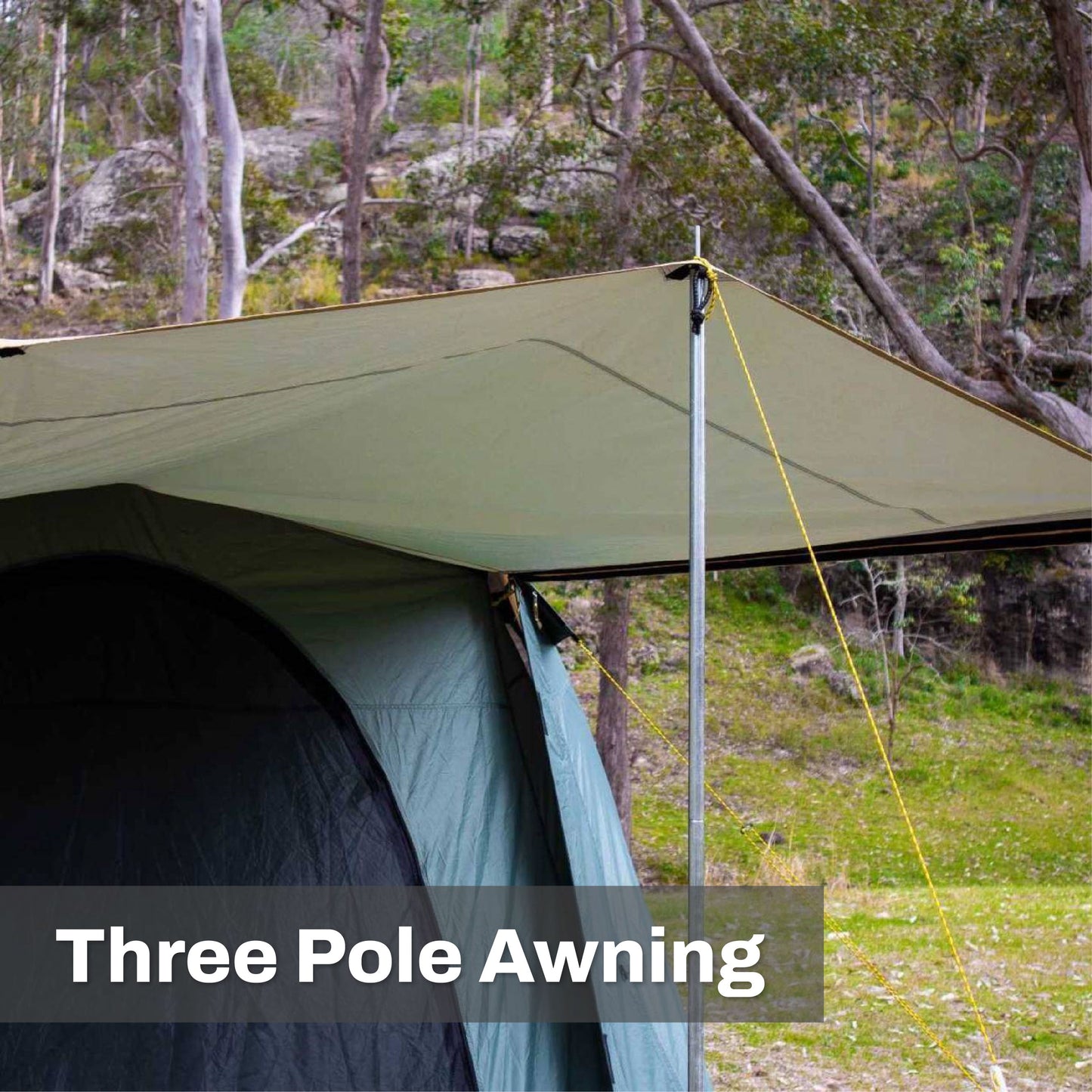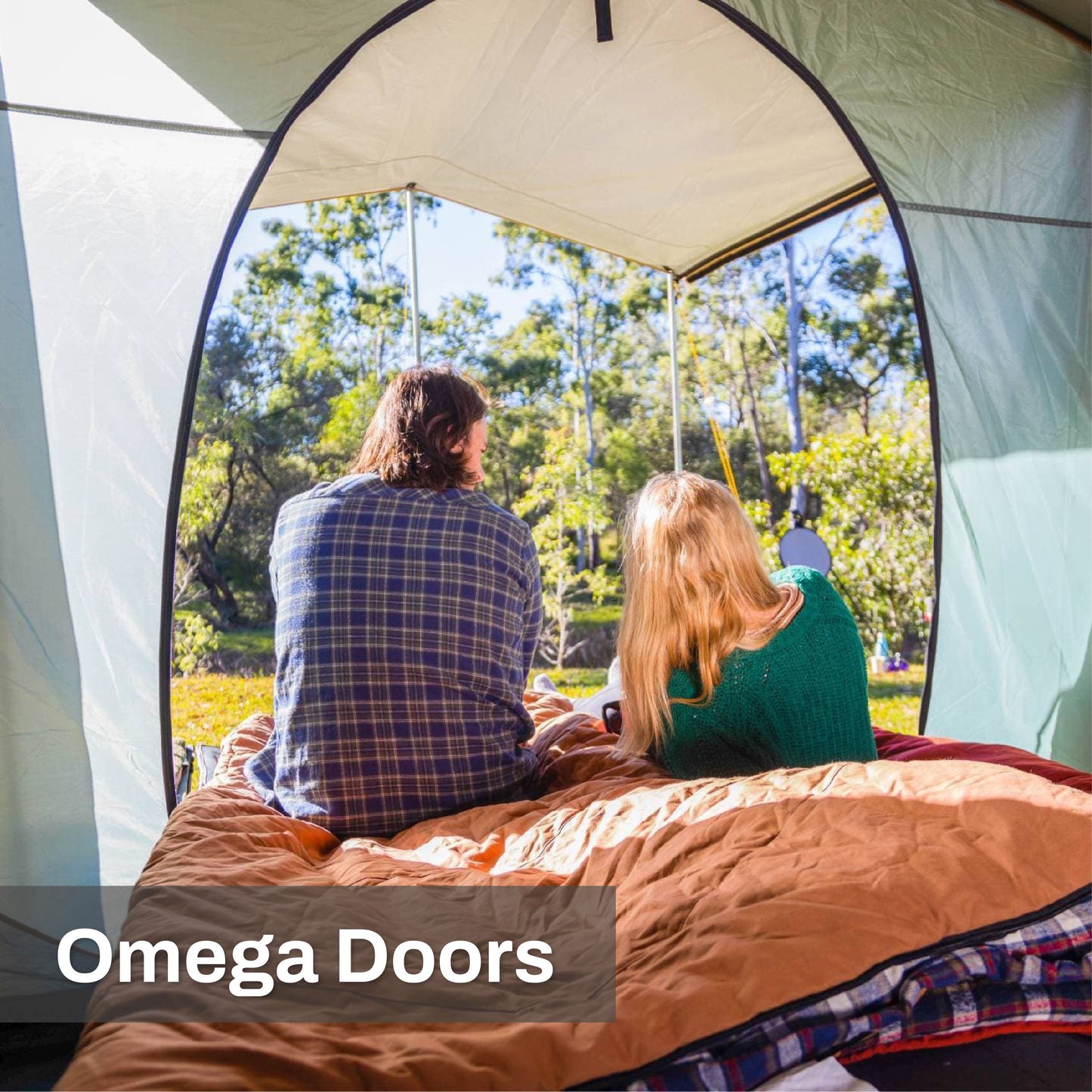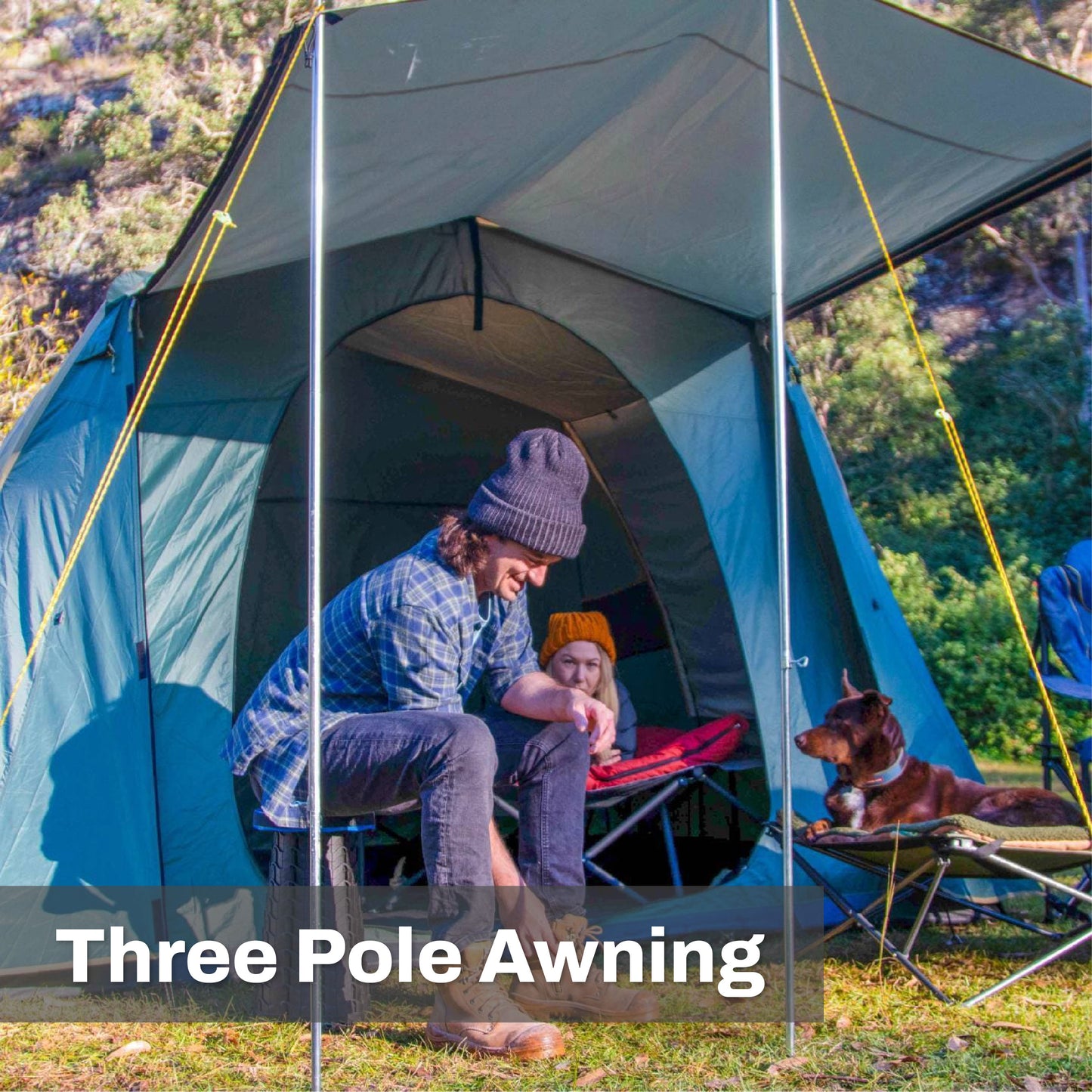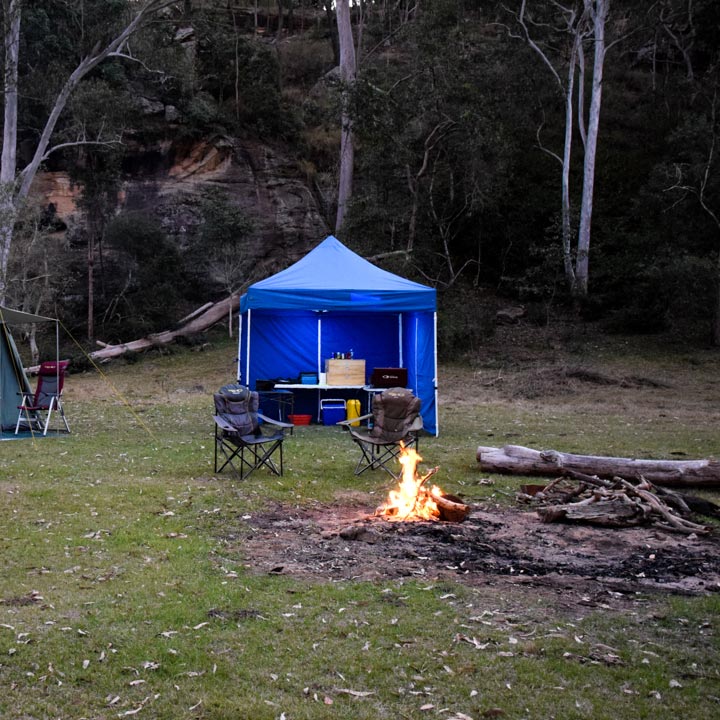Weekender 1R Cabin Dome Tent
$469.95 AUD
Regular price $299.00 AUDThe Outdoor Connection Weekender 1R family dome tent is perfect for couples or singles on a weekend getaway or a comfortable, longer stay. With 179 cm near-vertical high side walls and 210 cm peak height running the full length of the tent, you get that feeling of wanting to ‘fling your arms out and breathe in’, even while inside your tent.  Exceptional ventilation means you enjoy fresh air coming in all around on those warm summer nights. While, even in the heaviest rain, you stay dry and secure. Create wonderful memories with family and friends.
$469.95 AUD
Regular price $299.00 AUDThe Outdoor Connection Weekender 1R family dome tent is perfect for couples or singles on a weekend getaway or a comfortable, longer stay. With 179 cm near-vertical high side walls and 210 cm peak height running the full length of the tent, you get that feeling of wanting to ‘fling your arms out and breathe in’, even while inside your tent.  Exceptional ventilation means you enjoy fresh air coming in all around on those warm summer nights. While, even in the heaviest rain, you stay dry and secure. Create wonderful memories with family and friends.
FAQS
The Hornet Pole System consists of a centre ridge pole and 4, 6 or 8 upright ribs. This pole structure is easy to erect and provides excellent strength and stability.
The bent features in the side poles allow near-vertical side walls which give excellent internal space and headroom throughout.
A waterhead rating, also known as hydrostatic head, or HH, measures how waterproof a tent’s fabric is. The number (e.g. 1500 mm) refers to how tall a column of water the fabric can support before it leaks.
It applies only to the fabric, not seams, zippers or design. The real-world waterproof performance depends on the full tent construction, not just the spec.
Rating Categories & What They Mean
- 0–1000 mm = water-resistant only; suitable for light showers, typically 2-season tents
- 1000–1500 mm = entry-level waterproof; common in lightweight 3-season hiking tents
- 1500–5000 mm = very waterproof; ideal for family or 3–4 season tents used in extended wet conditions
- 5000 mm+ = highly waterproof; built for extreme use or prolonged rain, though often heavier and stiffer fabrics
Tent Floors Need a Higher Rating
Tent floors should have a higher waterhead rating than the outer flysheet. Floors endure body pressure and ground moisture, so a typical hiking tent floor needs around 6000–10,000 mm, while many family-style tents use PVC or polyethylene floors, which perform differently and often lack separate HH ratings.
Higher Numbers Aren’t Always Better
Ultra-high HH coatings can make materials heavy, stiff and prone to delamination or weakened tear strength. A well-designed tent with moderate HH but sealed seams and smart design often outperforms one with a very high spec but poor craftsmanship.
Care & Maintenance Tips
You can't raise your fabric’s inherent HH rating, but you can improve overall waterproofing:
- Apply seam sealers to stop leaks at stitch lines
- Reapply Durable Water-Repellent (DWR) spray to help water bead off rather than soak in
- Use a groundsheet or tarp for added protection
- Store and pitch the tent properly to reduce wear on coatings and seams
Choosing the Right Rating for Your Needs
- For summer or dry-weather camping, 1000–1500 mm is usually sufficient
- For year-round or wet weather, aim for 1500–3000 mm on the fly
- For frequent or expedition-style use, a 3000–5000 mm fly and a 6000–10 000 mm floor rating is more reliable
Quick Summary:
- 0–1000 mm = water-resistant
- 1000–1500 mm = waterproof
- 1500–5000 mm = very waterproof
- 5000 mm+ = extreme waterproof
- Floor rating ideally 2× fly rating for robust protection
On Outdoor Connection Tents, doors and windows are made as large as possible to ensure maximum ventilation and feature no-see-um mesh (a very fine mesh) to keep the smallest of bugs out. The quality of this mesh is therefore critical, as this mesh constitutes a ‘weak point’ in any tent.
What does Durafine do?
‘Dura’ as in Durable – the thread of the mesh must be strong. The large areas of windows and doors would be particularly vulnerable to damage if the thread is not strong. The mesh thread must also remain strong through time. The UV light causes the breakdown of any fabric over time. This particularly applies to mesh thread. Additives must be added in the manufacturing process to improve the resistance to UV degradation. Again, this costs ‘real’ money, so it is often neglected by many manufacturers because it is not a visible characteristic of the tent.
‘Fine’ refers to both the fineness of the mesh thread and the density (count) of the thread in the mesh. The best mesh will have densely packed, very fine threads so that midges, sandflies, and "no-see-ums" cannot get through the mesh.
Outdoor Connection tents use a high-performance 100 Denier (100D) HiCount polyester fabric for superior strength, water resistance and long-term durability.
The 100D thread weight means the fabric is made with thicker, stronger yarn, which improves tear resistance and abrasion strength. HiCount refers to the tightly woven thread density. More threads per inch means a more robust weave that repels water and resists damage.
Together, these features result in a protective, more rugged fabric ideal for Australian conditions. You can physically feel the extra weight and quality in the tent fly.
To maintain waterproof performance over years of use, Outdoor Connection applies a premium-grade Duraproof coating. Unlike standard coatings that wear down with repeated folding, this treatment resists abrasion and maintains its full 3000 mm Waterhead rating for the life of the tent.
Added to this is UV-Protek, a specialised treatment that shields the fabric and coating from sun damage. Without this, UV rays quickly degrade fabric and strip away waterproof coatings. Outdoor Connection selects only the most effective and long-lasting UV stabilisers, even though they cost more. Because performance matters.
A coil zip (also called a nylon coil zipper) uses a continuous coiled nylon filament stitched onto the zipper tape. It's flexible, lightweight and smooth to operate. Coil zips are commonly used in tents, backpacks, jackets and sleeping bags.
What does the # number mean?
The number (e.g. #5, #8, #10) refers to the width of the zipper teeth when closed, measured in millimetres:
#3 = 3 mm wide (small, often used in pockets)
#5 = 5 mm wide (standard for most tent doors)
#8 = 8 mm wide (stronger, used in higher-stress areas)
#10 = 10 mm wide (very heavy-duty, common on large tent entry points and awnings)
Higher numbers mean larger, stronger zips, but they can be heavier and stiffer.
Why use coil zips on tents?
Smooth operation, even around corners or curves
Resistant to jamming and dirt
Lightweight but strong
Can be repaired or replaced relatively easily
Got questions? Ask a real camper over the phone!
Outdoor Connection is an Australian-owned & operated company selling quality tents, camping and outdoor equipment used and designed by our design and support team. Outdoor Connection tents are designed for Australian camping conditions and manufactured to the highest quality in order to withstand the ‘tuff stuff.’

